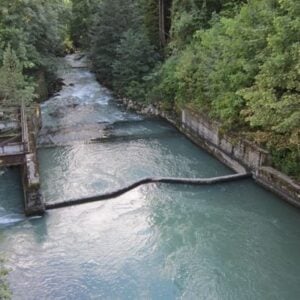Agriculture is central to rural livelihoods in Haiti, providing income for most families and employing two-thirds of the rural population. Yet the sector continues to face serious challenges that deepen rural poverty, which affects up to 75 percent of low-income households who often lack access to essential services. Years of underinvestment in rural infrastructure, public programs, and natural resource management have weakened Haiti’s agricultural base. Unsustainable farming practices, combined with land pressure and limited resources, have further degraded nearly 85 percent of the country’s watersheds.
Frequent natural disasters have worsened the situation. Events such as Hurricane Matthew in 2016 and the 2021 earthquake destroyed key irrigation channels in the south, making it nearly impossible for farmers to maintain steady incomes. For many rural households, subsistence farming remains the main source of food and survival. In 2012, around 80 percent of households dependent on agriculture lived below the poverty line, compared to the national average of 57 percent. Over the last decade, climate shocks, soil erosion, limited resources, and shrinking farmland have further reduced productivity, making farmers even more vulnerable.
To address these interconnected challenges, the Haitian government adopted the National Adaptation Program of Action (NAPA) in 2006. This strategy identified urgent climate risks, prioritized watershed restoration, and emphasized disaster preparedness as part of the country’s 2010–2025 development agenda. With support from the World Bank, the Resilient Productive Landscapes Project was later launched to tackle rural poverty directly. The initiative promotes sustainable farming, better land management, and improved infrastructure while training farmers in more resilient agricultural techniques.
The project has already achieved notable results. Thousands of farmers have adopted advanced agricultural technologies, with women playing a significant role. Over 2,000 hectares of land are now managed with sustainable practices, and farmer field schools have trained nearly 3,000 people in modern techniques. Investments have also supported participatory watershed management, family water storage tanks, matching grants to improve market access, and distribution of climate-resilient seeds and inputs following the 2021 earthquake. Irrigation systems have been restored, with over 32,000 meters of canals rehabilitated, directly boosting productivity in several southern regions.
Despite Haiti’s ongoing challenges, these efforts mark important progress in strengthening agriculture, protecting the environment, and improving rural livelihoods. By combining resilience-building strategies with investments in food security, the country is laying a foundation for a more sustainable and prosperous rural future.







